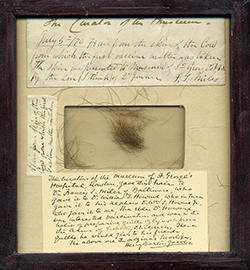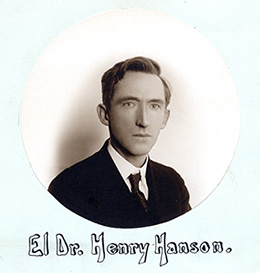NOT THE REAL ARISTOTLE
Aristotle’s Masterpiece was the best-selling book about sex and reproduction in both Britain and America for much of the eighteenth and nineteenth centuries. The book is not, however, by Aristotle. The title was a nod both to the fact that Aristotle was the leading classical authority on generation, and to his somewhat unexpected reputation as a sex expert in seventeenth-century England!
The Historical Collection’s first edition (1684) is one of a dozen or so copies held in libraries around the world. It is of particular interest because the setting of type on the title page is unique. While the publisher John How registered his book with the Stationers Company, thus reserving rights to himself, it seems that the book may have been pirated almost immediately.
Such speedy popularity was a harbinger of things to come: by the middle of the eighteenth century, there were more editions of the Masterpiece than all other English popular books about reproduction combined. In part, such popularity was due to its utility for childbearing women — details about pregnancy and the care of infants. However, its sensational discussions of the sexual act and monstrosity appealed to male readers as well. A surprising number of teenage boys, for example, are recorded as having read the book. Many copies of the book look as well-read as the one you see here.
HAIR OF THE COW

In 1798, Edward Jenner, an English country physician, published his historic work, An Inquiry into the Causes and Effects of the Variolae vaccinae, in which he demonstrated the effectiveness of vaccination in the prevention of smallpox, through illustrated case histories. In 1932, Dr. Henry Barton Jacobs donated his library to the Institute of the History of Medicine. One part of his collection is an enormous body of resources documenting the history of smallpox, including a large concentration of material relating to Edward Jenner and vaccination: one of the two known oil portraits of Jenner done from life; many French and English caricatures on the topic of vaccination; over one hundred letters written by Edward Jenner and other manuscripts (many published in Letters of Edward Jenner, and Other Documents Concerning the Early History of Vaccination. Edited by Genevieve Miller. Johns Hopkins University Press, 1983); numerous editions and translations of Jenner’s publications; hundreds of books and pamphlets recording the promotion of and campaigns against vaccination for over a century throughout Europe and America. Edward Jenner was a very special hero to Dr. Jacobs, who had one the four stained-glass windows, specially designed for his collection at the Institute, labeled “Vaccination.”
In addition to this wealth of research materials, the Jacobs Collection contains a unique and interesting object: some clippings of the hair of the cow named “Blossom” from whom Jenner first removed cowpox lymph. The cow hair was initially protected in small envelopes as it was exchanged as a gift among a number of physicians. Dr. Jacobs later had the cow hair housed in a small wooden frame surrounded by its former paper containers and notes attesting to its authenticity and history: ‘The Curator of the Museum of St. George’s Hospital, London, gave this hair [1870] to Dr. Francis T. Miles of Baltimore, who gave it to Dr. William T. Howard, who in turn gave it to his nephew Dr. Wm T. Howard Jr. who gave it to me. The elder Dr Howard was interested [in] vaccination and was in the habit of preparing quills of lymph from the arms of healthy children. These quills he would give to his friends. The above are the original Envelopes. [signed] Henry Barton Jacobs.’
Dr. Jacobs, an avid antiquarian, preserved in his note the fact of the old-fashioned distribution technique used by Dr. William T. Howard. More importantly, by the very act of framing the cow hair, along with safeguarding and displaying all the evidence of its provenance, Henry Barton Jacobs transformed a souvenir of a visit to St. George’s Hospital by Dr. Miles in 1870 into a veritable medical ‘relic.’ More than any rare book or manuscript that he owned, this remarkable object displays, with documented links, the direct connection of Dr. Jacobs, not only to Edward Jenner, but more significantly, to the original source of the material that Jenner used to demonstrate one of the most successful medical interventions of all time.
YELLOW FEVER CONTROL IN PERU
 From 1919-1921, Henry Hanson, MD (1877-1954), as Director of Yellow Fever Control for the National Health Department of Peru, led a Rockefeller Foundation-funded fight against a yellow fever and bubonic plague epidemic in northern Peru. In 1921, his staff in the Campaña Sanitaria Contra la Fiebre Amarilla en el Peru presented Hanson with this large commemorative volume containing materials documenting the activity in the department of Lambayeque in 1921. Included in the book are: typed copies of letters and reports; photographs and descriptions of the sanitation corps; graphs and maps of disease vectors and water supply by town; morbidity, mortality, and social condition charts by town. One of the most successful techniques recorded was the introduction by campaign workers of small larvae-eating fish in water containers throughout the district, which resulted in a dramatic decrease in the mosquito population, contributing to the end of the epidemic.
From 1919-1921, Henry Hanson, MD (1877-1954), as Director of Yellow Fever Control for the National Health Department of Peru, led a Rockefeller Foundation-funded fight against a yellow fever and bubonic plague epidemic in northern Peru. In 1921, his staff in the Campaña Sanitaria Contra la Fiebre Amarilla en el Peru presented Hanson with this large commemorative volume containing materials documenting the activity in the department of Lambayeque in 1921. Included in the book are: typed copies of letters and reports; photographs and descriptions of the sanitation corps; graphs and maps of disease vectors and water supply by town; morbidity, mortality, and social condition charts by town. One of the most successful techniques recorded was the introduction by campaign workers of small larvae-eating fish in water containers throughout the district, which resulted in a dramatic decrease in the mosquito population, contributing to the end of the epidemic.
